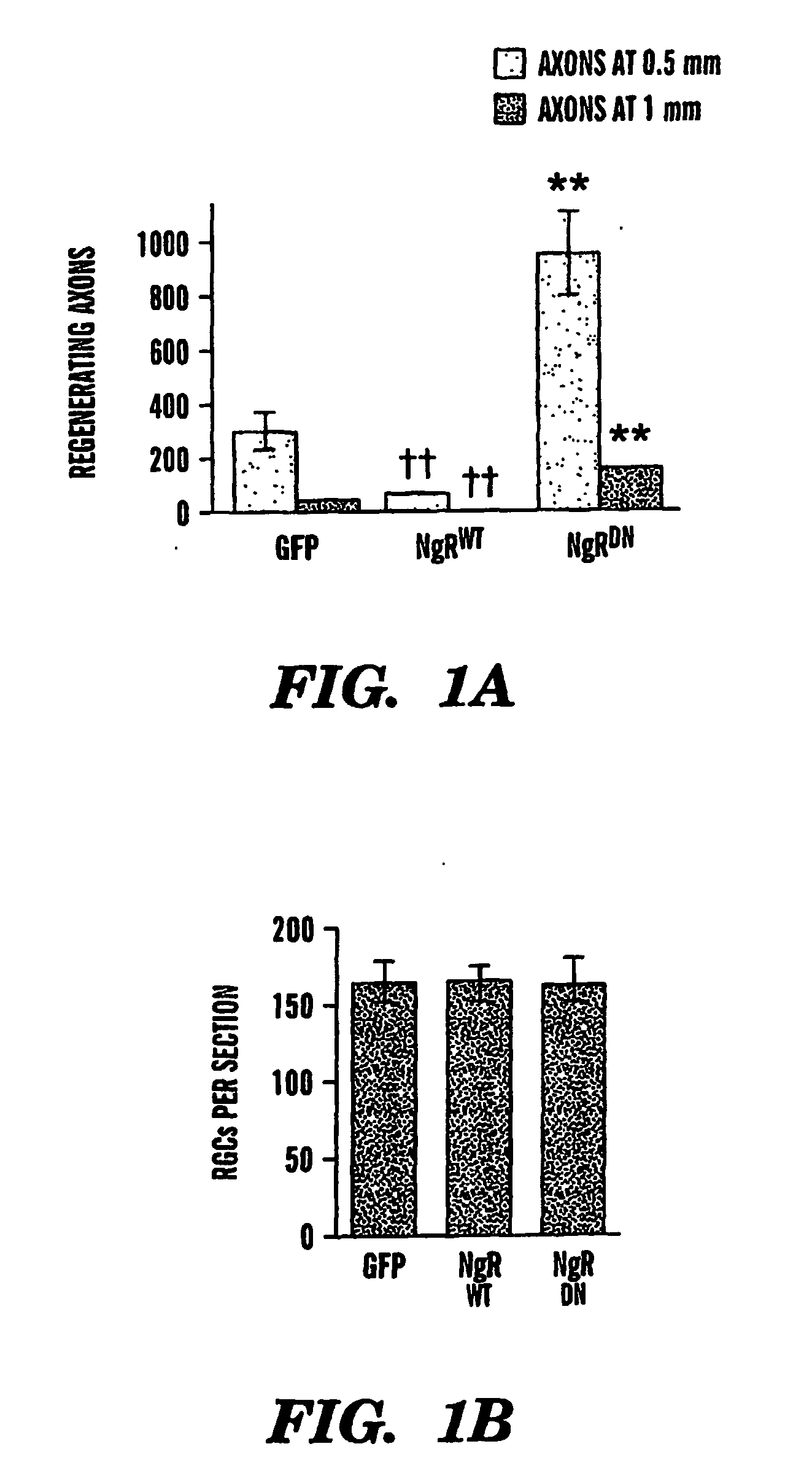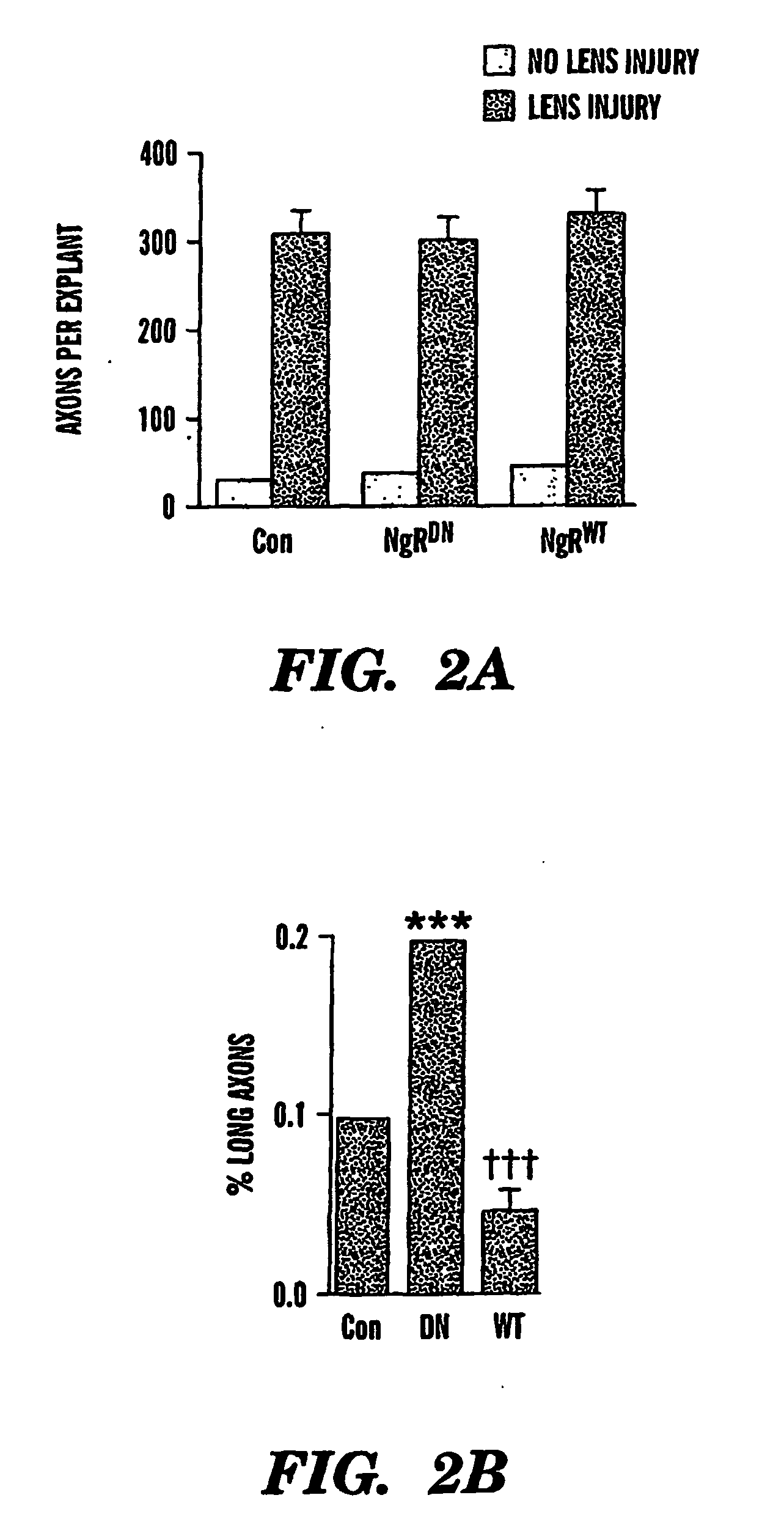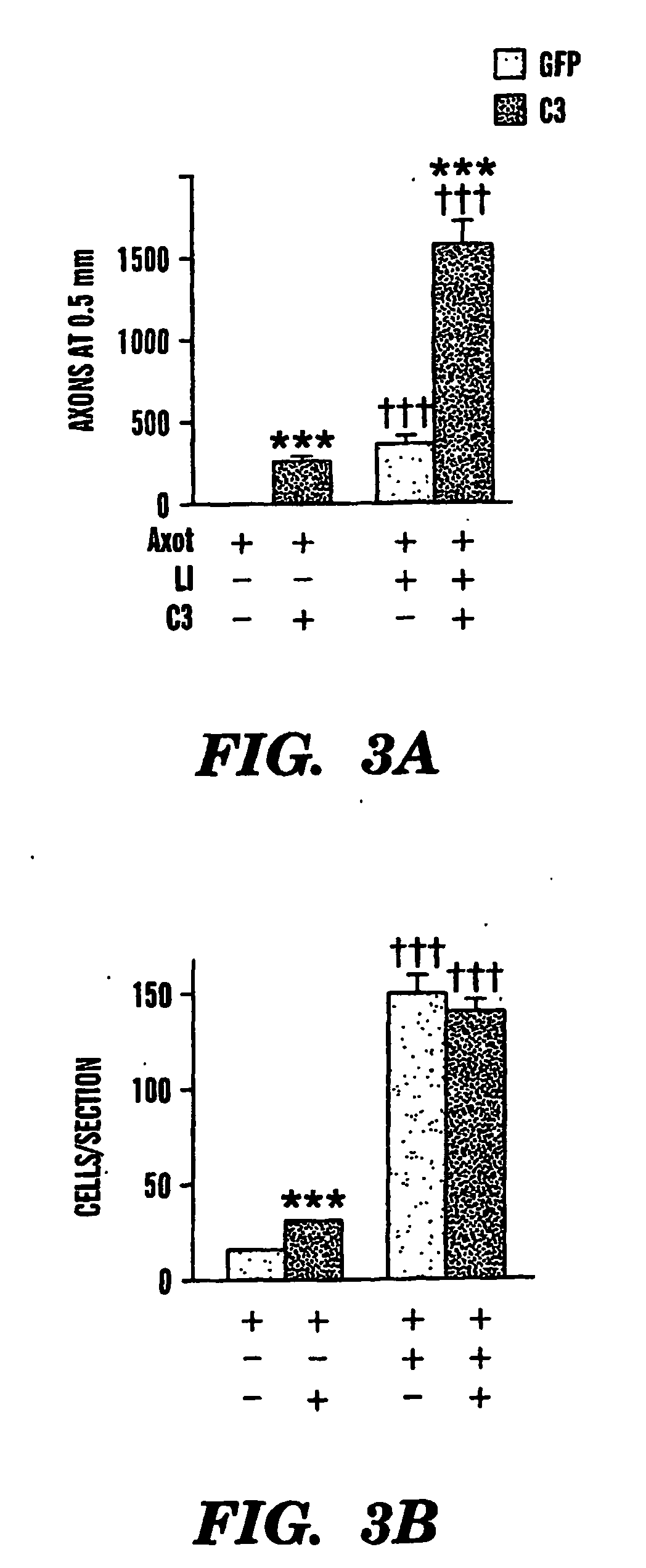Method for Treating Neurological Disorders
a neurological disorder and treatment method technology, applied in the field of neurological disorders, can solve the problems of severe limitations on the functional recovery, the inability of cns neurons to regenerate their axons, and the effect of overexpressing either ngr or ngr/sup>dn has not been investigated in vivo, so as to achieve the effect of suppressing activity
- Summary
- Abstract
- Description
- Claims
- Application Information
AI Technical Summary
Benefits of technology
Problems solved by technology
Method used
Image
Examples
example i
NgR Mediates Axon Regeneration in Mature CNS
[0141]The optic nerve is a classic model for understanding regenerative failure or success in the mature mammalian CNS (Aguayo et al., 1991; Ramon y Cajal, 1991). Axons that are injured in the mature rat optic nerve cannot grow back into the myelin-rich environment distal to the injury site. In addition, if axonal damage occurs close to the eye, retinal ganglion cells (RGCs) undergo apoptosis after several days (Berkelaar et al., 1994). Several intraocular manipulations, including injuring the lens (Leon et al., 2000; Fischer et al., 2000, 2001), injecting the pro-inflammatory agent zymosan (Yin et al., 2003), or inserting a peripheral nerve fragment (Berry et al., 1996), partially reverse this situation and allow many RGCs to survive injury and regenerate lengthy axons into the optic nerve; these effects appear to be mediated via macrophage-derived factors (Yin et al., 2003) acting in concert with a carbohydrate that is constitutively pre...
example ii
RhoA Inactivation Combined with Lens Injury Results in High Levels of Axon Regeneration
Materials And Methods
Induction of Axon Regeneration
[0163]Adult female Sprague Dawley rats, 220-250 gm, were anesthetized by intraperitoneal injection of ketamine (60-80 mg / kg) and xylazine (10-15 mg / kg), and a 1-1.5 cm incision was made in the skin above the right orbit. The optic nerve was surgically exposed under an operating microscope, the epineurium was opened longitudinally, and the nerve was crushed 0.5 mm behind the eye for 10 sec using jeweler's forceps, avoiding injury to the ophthalmic artery. Nerve injury was verified by the appearance of a clearing at the crush site; the vascular integrity of the retina was verified by fundoscopic examination. Lens injury was induced through a retrolenticular approach, puncturing the lens capsule with the narrow tip of a microcapillary tube; inflammation was enhanced by injecting 10 μl of PBS intravitreally after retrieving the same volume from the an...
PUM
| Property | Measurement | Unit |
|---|---|---|
| Concentration | aaaaa | aaaaa |
| Solubility (mass) | aaaaa | aaaaa |
Abstract
Description
Claims
Application Information
 Login to View More
Login to View More - R&D
- Intellectual Property
- Life Sciences
- Materials
- Tech Scout
- Unparalleled Data Quality
- Higher Quality Content
- 60% Fewer Hallucinations
Browse by: Latest US Patents, China's latest patents, Technical Efficacy Thesaurus, Application Domain, Technology Topic, Popular Technical Reports.
© 2025 PatSnap. All rights reserved.Legal|Privacy policy|Modern Slavery Act Transparency Statement|Sitemap|About US| Contact US: help@patsnap.com



